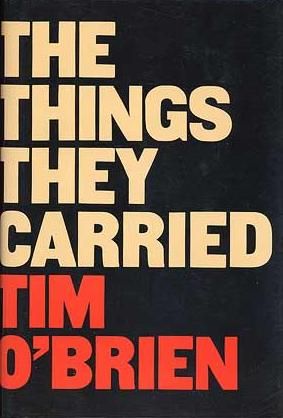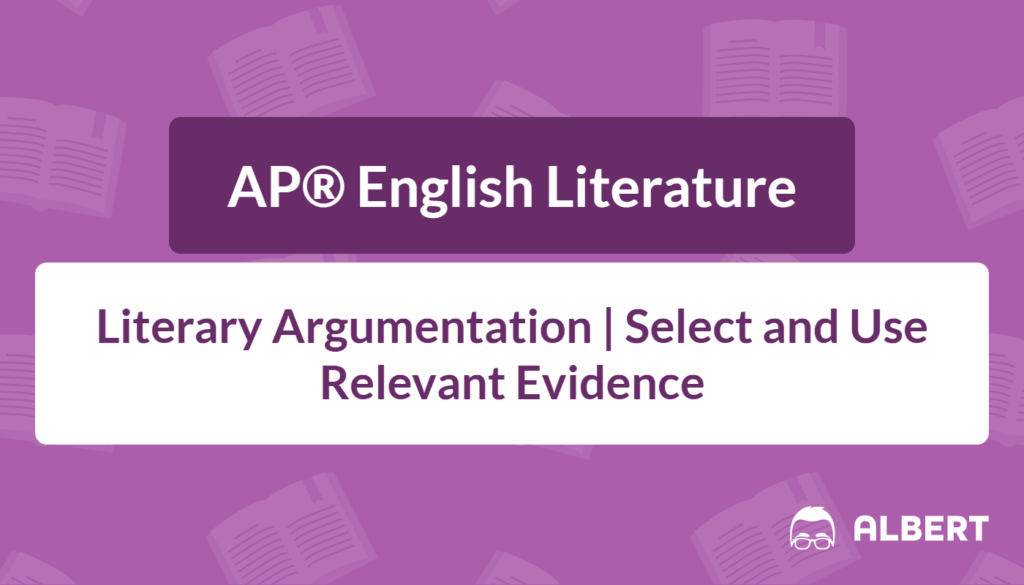What We Review
Mastering Literary Argumentation: Selecting and Using Relevant Evidence
The Importance of Literary Argumentation
Literary argumentation is the foundation of success on the AP® English Literature and Composition exam. Readers strengthen their analysis by developing a clear line of reasoning and supporting it with textual evidence from short fiction, longer fiction, drama, or poetry. A strong argument goes beyond stating an opinion about a text; instead, it shows how specific details, characters, and themes illustrate a central claim. Therefore, focusing on strong supporting details helps readers build a convincing case that exam readers will appreciate.
Effective literary argumentation also rewards close reading skills. It encourages a deeper understanding of texts, helping students move from basic summaries to compelling arguments. Ultimately, strong arguments and relevant examples bring clarity and organization to any literary discussion.
Understanding Literary Argumentation
A line of reasoning is the logical path that connects a thesis statement to supporting points. In other words, it is the chain of ideas that turns evidence into a convincing conclusion. This path ensures that claims are clearly substantiated, which is essential for earning high scores on AP® essays.
Consider Hamlet by William Shakespeare. A reader might argue that Hamlet’s introspection reveals the complex nature of revenge. Therefore, the line of reasoning would start with a thesis (“Hamlet’s indecision reflects a broader commentary on the moral weight of revenge”), then cite specific scenes to support it. For example, the “To be or not to be” soliloquy provides a brief but powerful illustration of Hamlet’s mental struggle: “For in that sleep of death what dreams may come.” This quote exposes Hamlet’s fear of potential consequences. Step by step, each reference to indecision throughout the play would reinforce the claim that revenge is not a simple act of vengeance but a moral wrestling match.
The Role of Textual Evidence
Textual evidence is any direct reference to or paraphrase of a literary work that supports an analytical claim. This evidence can be a short quotation, a summary of a pivotal event, or a paraphrased idea. Short quotations are especially helpful because they preserve the power of the author’s own words.
In The Great Gatsby by F. Scott Fitzgerald, noticing the imagery associated with the green light helps illustrate Gatsby’s aspirations. When Gatsby reaches out to the light at the end of Daisy’s dock, the narrator describes it as “a single green light, minute and far away.” This short quote hints at the distance between Gatsby’s dream and reality. By focusing on this symbol, a reader uses direct textual evidence to show how Fitzgerald underscores the theme of relentless hope clashing with the limits of the American Dream.
It is important to select evidence that directly relates to the argument. Summaries and paraphrases can help, but a concise quote often captures an author’s voice or imagery that makes the analysis even more precise.
Strategies for Selecting Relevant Evidence
Selecting the right details can transform a bland essay into a persuasive one. While reading, it is helpful to keep the line of reasoning in mind. Look for passages that demonstrate a specific theme, conflict, or character trait.
- Read with purpose: Scanning for repeated words, unusual imagery, or dramatic changes in tone can uncover key moments.
- Ask targeted questions: What is the character feeling? How does the setting contribute to tension or irony? Why does the author emphasize a certain object or gesture?
In The Scarlet Letter by Nathaniel Hawthorne, analyzing Reverend Dimmesdale’s hidden guilt reveals how internalized shame can corrupt both the mind and body. For instance, when Hawthorne writes that Dimmesdale’s “burden of secret sin was dragging him down into the grave,” the language evokes both physical deterioration and spiritual torment. This detail reflects how Dimmesdale’s refusal to confess publicly isolates him and distorts his perception of himself and others. By identifying passages that portray his suffering, students can build a strong argument connecting character development to the novel’s broader critique of hypocrisy and the destructive power of guilt.
How to Analyze Quotes
Simply inserting quotes into an essay is not enough. Understanding the context, meaning, and relevance of each quoted passage is crucial. A methodical approach often begins with setting up the quote, examining the words or imagery used, and connecting it back to the claim.
Here is a step-by-step way to analyze a quote:
- Contextualize: Briefly explain the circumstances in which the quote appears.
- Highlight key words: Identify critical words or phrases that convey tone or attitude.
- Link to theme or character: Relate these phrases to the larger themes or character arcs.
- Conclude with interpretation: Show how this quote advances the argument or reveals new insight.
For instance, in Jane Eyre by Charlotte Brontë, Jane’s struggle for autonomy is powerfully expressed when she tells Mr. Rochester, “I am no bird; and no net ensnares me: I am a free human being with an independent will.” A quick analysis might begin by explaining that this quote comes as Jane resists the power imbalance in their relationship. Noting the metaphor “no net ensnares me” highlights Jane’s rejection of emotional or social confinement. Finally, linking this moment to the novel’s larger themes of self-respect and female independence reveals how Jane asserts her agency even within a repressive Victorian context.
Introducing Evidence in Your Argument
Integrating textual evidence with smooth transitions and strong signal phrases ensures an essay reads cohesively. Rather than dumping a quote into a paragraph, it is better to craft a sentence that naturally leads into the evidence.
- Sample sentence starters:
- According to the narrator, …
- The text illustrates this point when …
- The character’s reflection reveals, …
- This conflict becomes clearer in the line, …
In Jane Eyre by Charlotte Brontë, seamless integration can be seen when discussing the struggle between passion and self-control. Begin by stating the claim (“Jane wrestles with her desire for love and her moral convictions”). Then follow with a transition phrase that introduces the textual support (“The character’s reflection reveals this inner conflict when she declares, ‘I will keep the law given by God; sanctioned by man.’”). The quote highlights Jane’s integrity and self-discipline, reinforcing the argument that Brontë presents moral independence as a form of inner strength. Explaining the significance of this line completes the connection between the claim and the evidence.
Developing a Strong Line of Reasoning
A coherent argument weaves all examples, insights, and commentary into one fluid explanation. Each piece of evidence must reinforce the primary thesis and relate to the other points discussed. Therefore, it is often beneficial to revisit the original claim and confirm that each paragraph or section progresses logically.
In Crime and Punishment by Fyodor Dostoevsky, a central argument might focus on Raskolnikov’s journey from isolation to redemption. A line of reasoning could unfold like this:
- Claim: Raskolnikov’s guilt leads him to a spiritual crisis that challenges his belief in intellectual superiority.
- Evidence: A quote from a scene where Raskolnikov confesses to Sonia, saying, “I did not bow down to you, I bowed down to all the suffering of humanity.”
- Analysis: This act of humility signifies a break from his earlier arrogance. It also foreshadows his eventual moral rebirth, showing that Dostoevsky uses confession as a turning point in Raskolnikov’s psychological transformation.
Stringing these points together in a structured way ensures that each new piece of evidence reinforces the character’s evolving conscience. The result is a clear argument about guilt and redemption.
Analyzing Evidence: Making Connections
It is not enough to present relevant quotes. Discovering how these quotes fit together reveals deeper meaning. Consider how seemingly unrelated events or motifs can converge to support a theme. For instance, a reader might compare a scene of physical conflict with a moment of emotional confrontation to show how a character handles different challenges.

In The Things They Carried by Tim O’Brien, the physical weight of supplies in the Vietnam War symbolizes emotional burdens. A passage referencing the “hump of fear” and personal mementos allows readers to see how tangible items mirror inner struggles. Therefore, the text underscores how fear and guilt can weigh just as heavily on the mind as actual equipment does on the body. Bringing this moment into connection with a later scene, where a character silently grapples with memories, strengthens an essay’s central argument about the inescapable burden of trauma.
Quick Reference Chart: Important Vocabulary and Definitions
| Term | Definition or Key Feature |
| Textual Evidence | Direct references or paraphrases from a text used to support an argument. Examples include short quotes, dialogue, or summaries of key scenes. |
| Line of Reasoning | The logical sequence connecting a thesis to its supporting points. Each piece of evidence advances and reinforces the central claim. |
| Types of Evidence | Quotes, paraphrases, and summaries. Quotes preserve the original language. Paraphrases rephrase a segment in simpler terms, while summaries offer a concise overview of larger passages. |
| Context | Background information about where, when, and why a particular quote or scene occurs in the text. Context helps readers see how the evidence fits into the overall narrative or argument. |
| Analysis | Detailed exploration of how a piece of evidence proves a point. Links the evidence to themes, characters, or conflicts and clarifies why it is relevant to the claim. |
| Relevance | The importance of evidence to a specific claim. Relevant evidence directly addresses the question or thesis, showing that it fits logically into the argument. |
Building strong arguments with concrete support is vital for performing well on the AP® English Literature exam. Each compelling essay relies on a clear line of reasoning that connects textual evidence to a central insight. Thorough reading and thoughtful choices about which quotes to include create a polished analysis. It is always helpful to revisit the main themes and ideas often, ensuring that every piece of evidence leads back to the thesis. This approach delivers both clarity and depth, demonstrating the kind of literary understanding that garners success in academic discussions and on exam day.
Sharpen Your Skills for AP® English Literature and Composition
Are you preparing for the AP® English Literature and Composition test? We’ve got you covered! Try our review articles designed to help you confidently tackle real-world AP® English Literature and Composition problems. You’ll find everything you need to succeed, from quick tips to detailed strategies. Start exploring now!
- AP® English Literature: Claim and Evidence
- AP® English Literature: How to Write a Thesis Statement
- AP® English Literature: Commentary and Reasoning
- AP® English Literature: Elements of Composition
Need help preparing for your AP® English Literature and Composition exam?
Albert has hundreds of AP® English Literature and Composition practice questions, free response, and full-length practice tests to try out.








